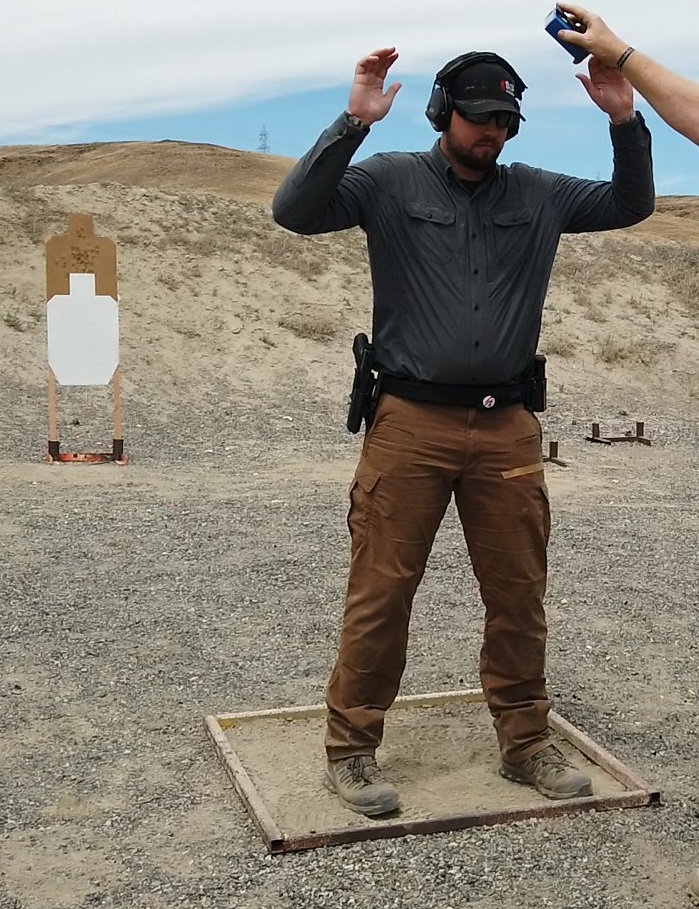In a previous Question of the Month, we discussed the changes to the definition of facing downrange, but we have observed that there is still some confusion about what the definition of facing uprange is. For July, we showed a picture of a competitor in a facing uprange start position, and asked if he was in the correct position. The results indicated that we chose a good topic to explore.

This start position states facing uprange. Is this competitor in the proper position? The results were closer than we anticipated they would be:
First, let’s look at the definition of ‘facing uprange’ from the rulebook. It is found in the Glossary, Appendix A3: Face and feet pointing directly (180 degrees) away from the backstop with shoulders and hips square to the backstop. A natural, “toes out” stance is acceptable and meets the standard of feet pointing directly away from the backstop, as long as both feet do not point in the same direction, and the rest of the position requirements are satisfied.
So, what is wrong in the above picture? His face and shoulders aren’t pointing directly away from the backstop. The fact that one foot is back isn’t a problem, but the front foot is angled in and pointing in the same direction as the other which is a problem. Here is a good example of facing uprange.

In the above picture, the competitor’s face, shoulders and hips are square to the backstop. Toes are pointing in the proper direction too. So what is a RO to do if a competitor isn’t in the proper position? Politely ask the competitor to adjust their position and not start the competitor until the proper start position is assumed.
Remember, we changed the definition of facing downrange to be more relaxed, but the definition of facing uprange is the same and is still very specific.
Visit the NROI Blog homepage to cast your vote in the current Question of the Month.